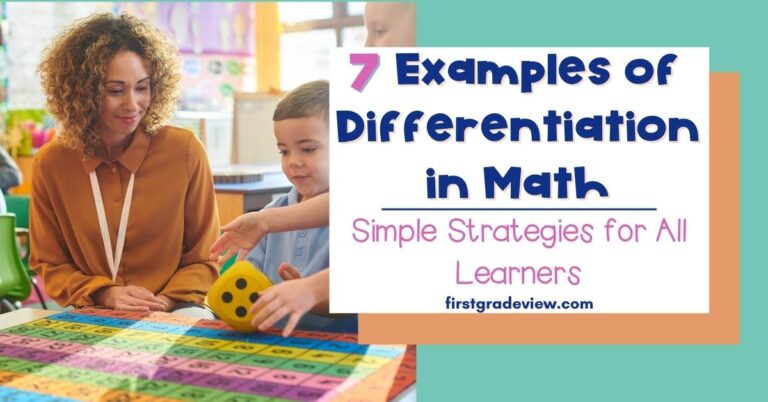Welcome back to this mini blog series on the 8 Standards for Mathematical Practices! In my last post, I talked about the importance of teaching the mathematical practice standards. I went over Math Practices 1 and 2. You can read about it here. In this post, I will break down Math Practices 3 and 4 in terms of what they are and how you can teach about them in your classroom.
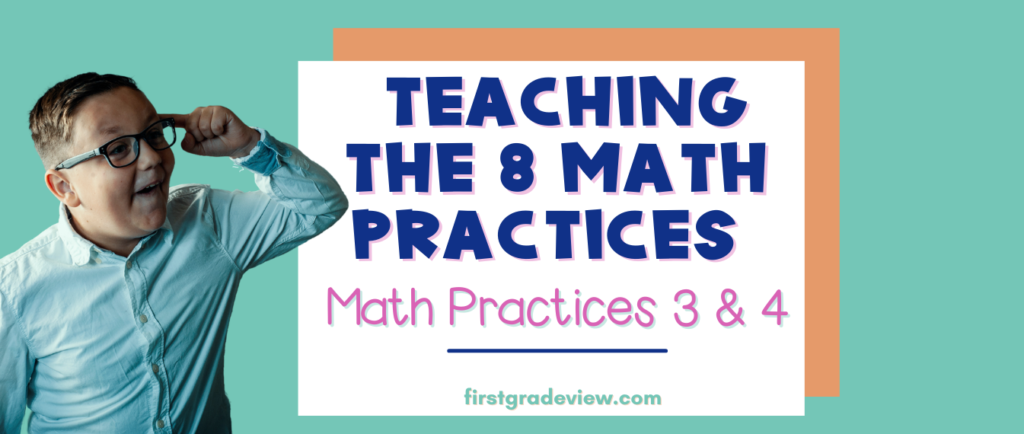
Every November, I read The Great Turkey Race by Steve Metzger to my students. In this story, Cassie, Wing, and Ollie all want to be the Thanksgiving Turkey! They participate in a series of races and the turkey that wins the most medals will be chosen. The problem is, one turkey keeps cheating. At a certain point, two of the turkeys learn what really happens to the Thanksgiving Turkey and must decide if they should let the cheating turkey know. This always sparks a debate in my classroom. Students justify why the cheating turkey should or should not be let in on the truth.
I love this story because of the passionate reaction my students have. We always end up having a very engaging class debate. In language arts, it is easy for these engaging conversations to take place. However, thanks to the mathematical practice standards, students can and should participate in highly engaging conversations around math too!
Teaching Mathematical Practice Standards
Mathematical Practice Standard 3: Construct Viable Arguments and Critique the Reasoning of Others
In this math practice, students learn the importance of sharing their math thinking with others. By communicating their math process, students develop their reasoning skills. Additionally, students can try out new strategies and become even more proficient by learning from their peers.
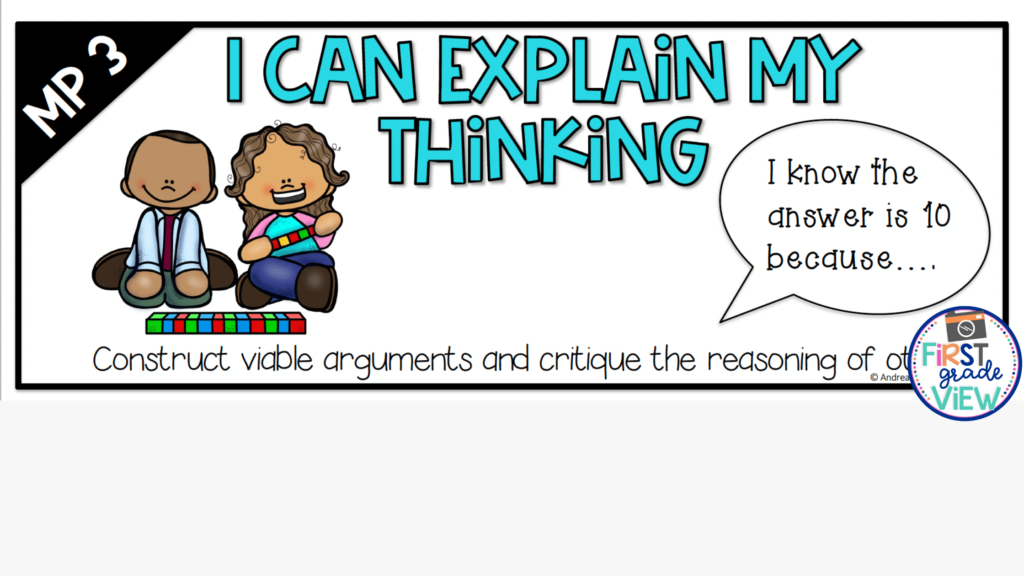
The following activities are examples of how students can build this math habit.
Which One Doesn’t Belong?– In this activity, students are shown a series of pictures, numbers, math expressions, etc. Students then must decide which one does not belong and justify their thinking by sharing it with others. This activity is great for building deep math discussions. The best part is that it allows for multiple points of entry and there is no wrong answer. This takes the pressure off of students and therefore, is a pretty engaging activity!
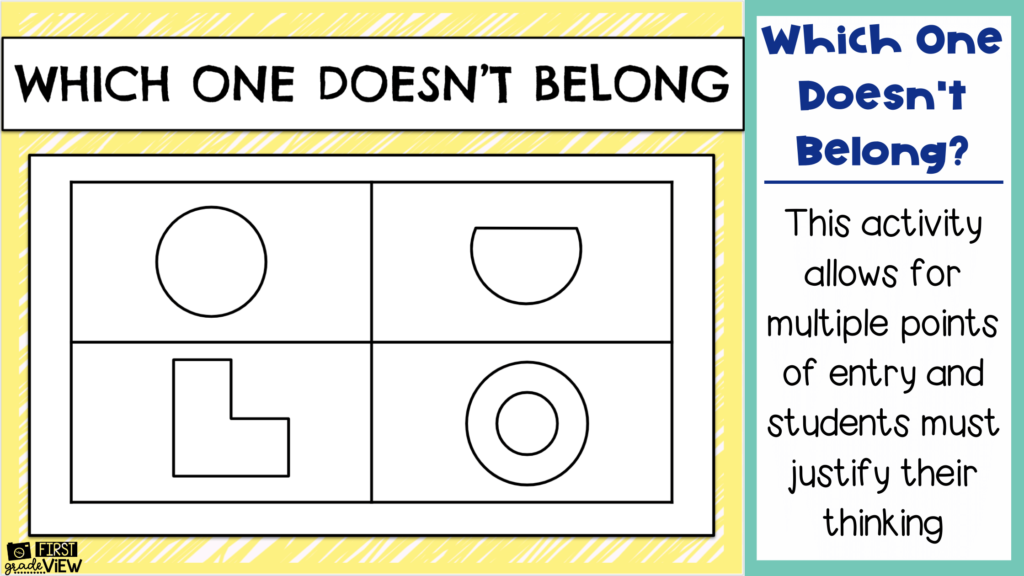
Questioning– One way you can develop this practice in your classroom is to make questioning part of your daily routine. When you ask students open-ended questions, they learn that they have to be purposeful in their work. You also help build the norm that students will be justifying their thinking and sharing it with others. Here are some examples of questions you could ask:
- What strategy did you use to solve?
- How can you show your strategy?
- Why does that make sense to you?
- Does that answer make sense? How do you know?
- Why was that the most efficient approach?
- Do you notice any patterns?
- Can you explain what you mean?
It is important to note that K-2 students are building this skill. Therefore, it is important they are allowed to use concrete referents such as drawings, counters, base ten blocks, number lines, models, tables, charts, etc. to explain their thinking.
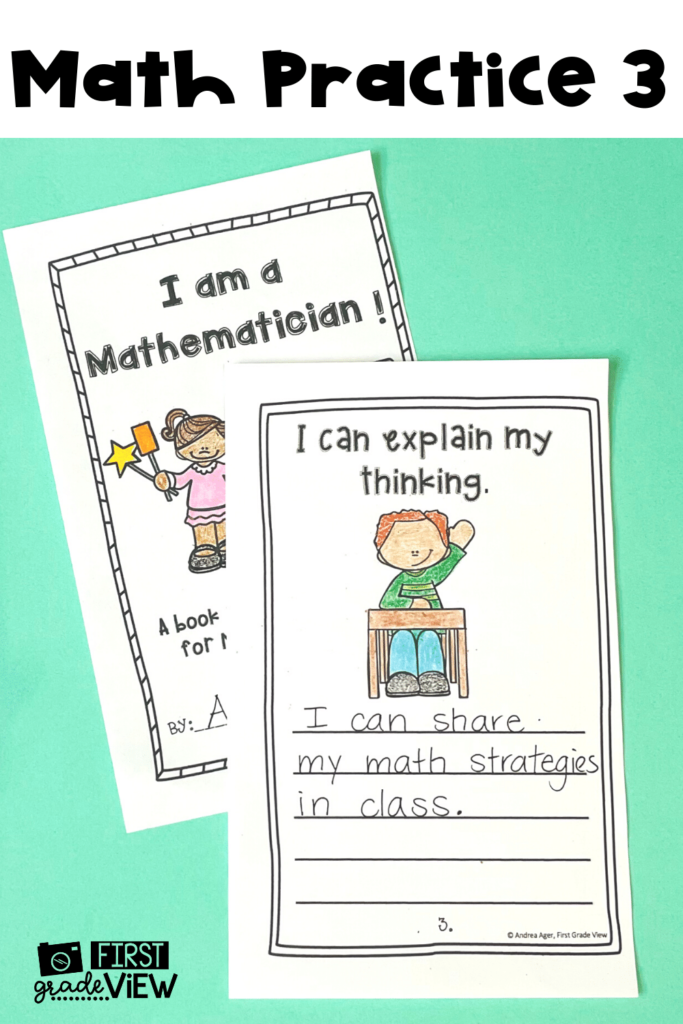
Math Talks– Math talks provide a great opportunity for students to share their math thinking. One type of math talk is where you hold up a side by side of two strategies used for the same problem and have students compare how they are alike and different. You can also have students explain someone else’s strategy. Another math talk possibility is to project an image and have students discuss it. The possibilities are endless!
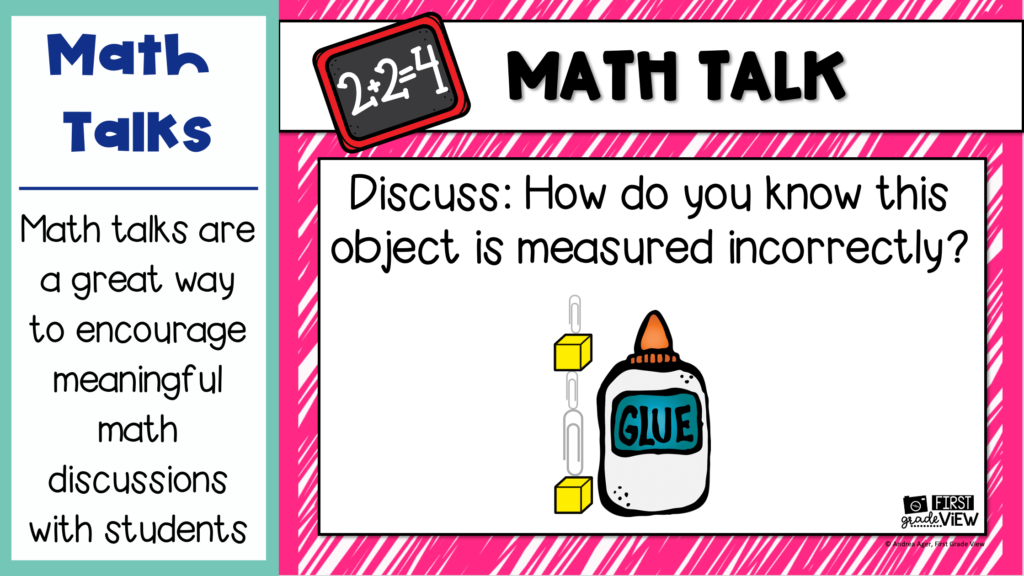
Math Practice 4: Model With Mathematics
In this mathematical standard practice, students use their math knowledge to make sense of and solve problems that arise in everyday life. In the primary classroom, this can look like students using a pictorial representation or an equation to describe a situation in a word problem. This math practice helps students build their conceptual understanding. Students also learn to use models to draw conclusions based on their model.
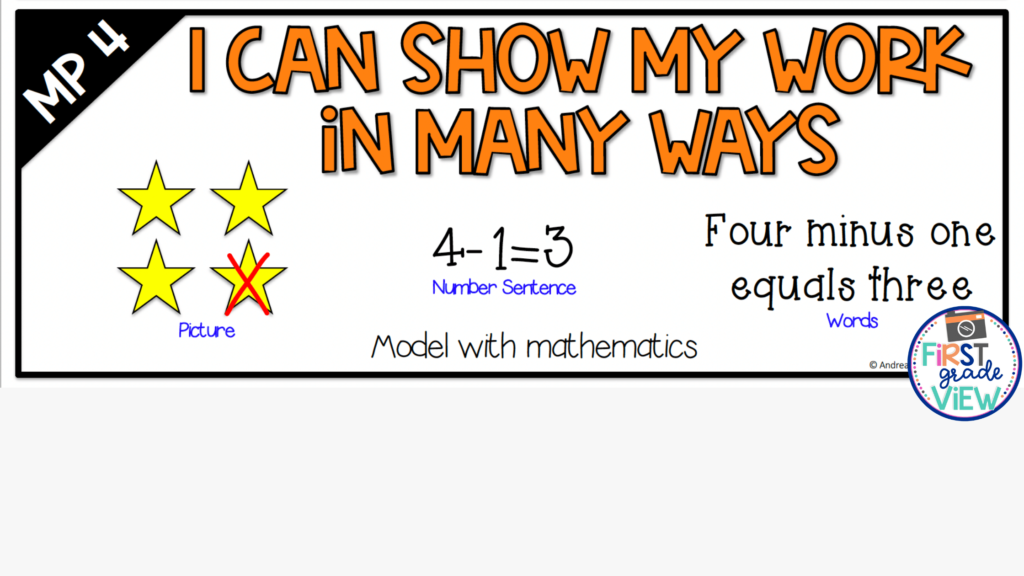
The following activities are examples of how students can build this math habit.
Open Ended Word Problems– Open ended word problems are great because they provide multiple points of entry and there is more than one possible solution. You want to encourage students to model their thinking. This allows for an opportunity to discuss how students can represent their thinking using pictures, numbers, equations, etc. As a primary teacher, it is important to model to students how they can represent math with efficient representations rather than detailed drawings.
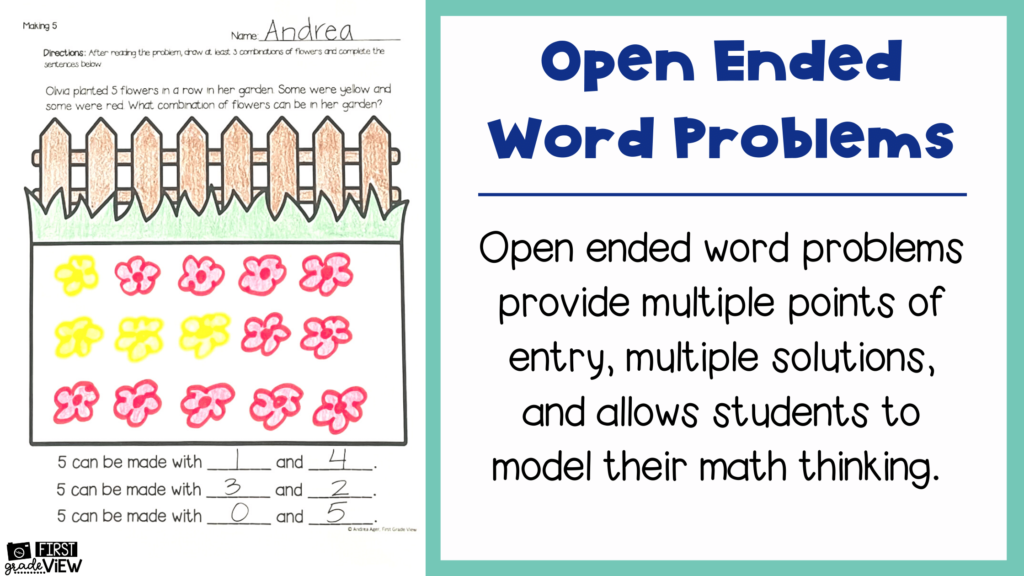
Multiple Ways to Solve a Problem– You can present students with a problem and challenge them time to solve the problem in multiple ways. Afterwards, you can have students share out. Then write the problem on a chart and record the multiple strategies students presented. This practice of having students share their strategies with their peers, will help build this math practice and also encourage their peers to take on more efficient ways of solving.
Questions to Develop Math Practice 4
- How could you show your strategy using a drawing?
- How could you show your strategy using a number model?
- What equation or expression matches the picture…diagram…number line…?
- What math situation is happening in this problem? How can you use what you know to represent this situation?
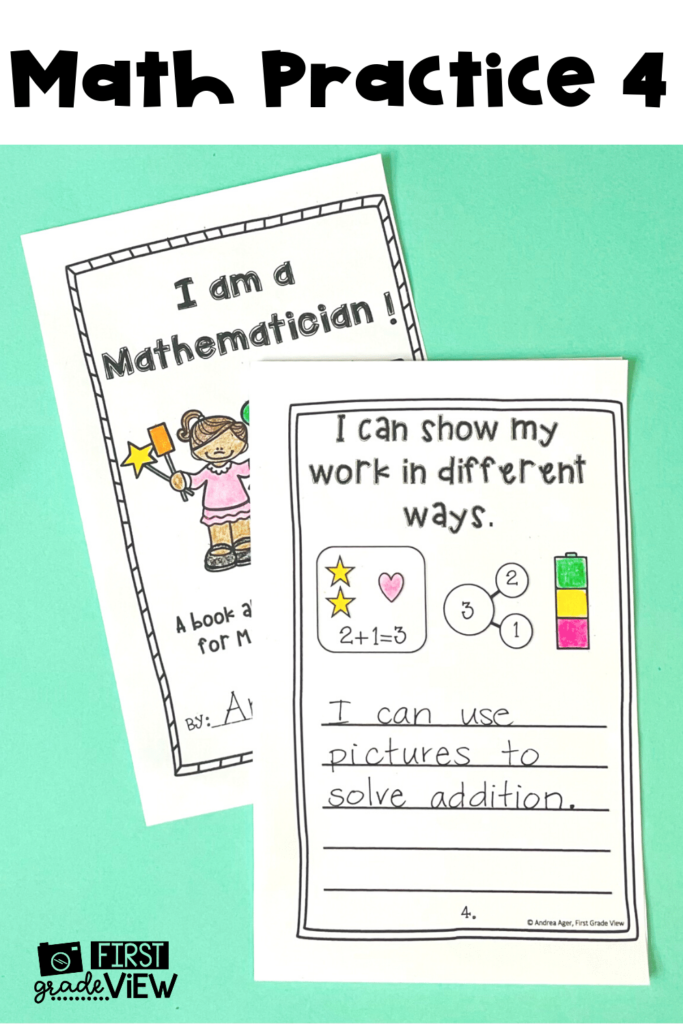
Thank you for following along in this blog series all the 8 Mathematical Practice Standards. Be sure to grab a set of these math practice posters to use with your students! Don’t forget to come back so you can read all about Math Practice Standards 5 and 6 and how you can incorporate them in your classroom!
You May Also Like:
Build Math Habits: Model with Math and Visual Tools
Teaching the 8 Standards of Math Practice: Math Practice 1 and 2

